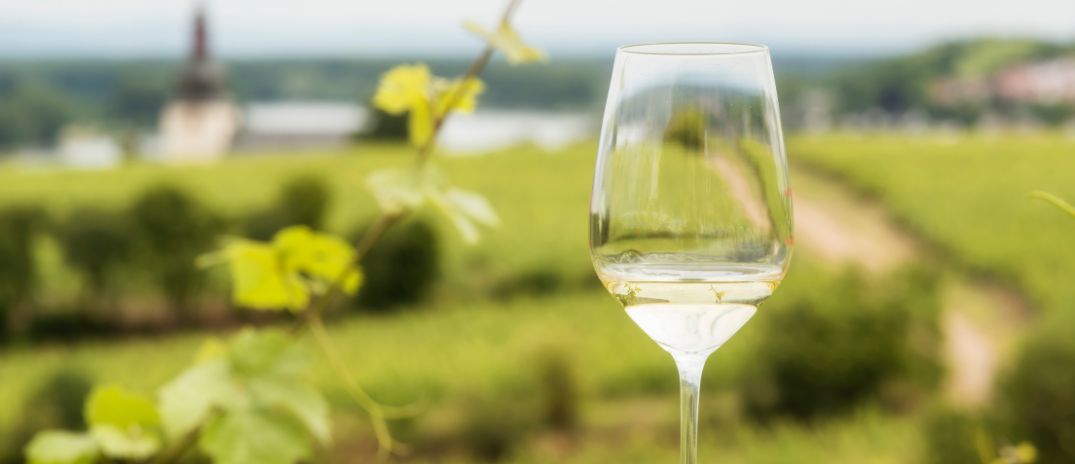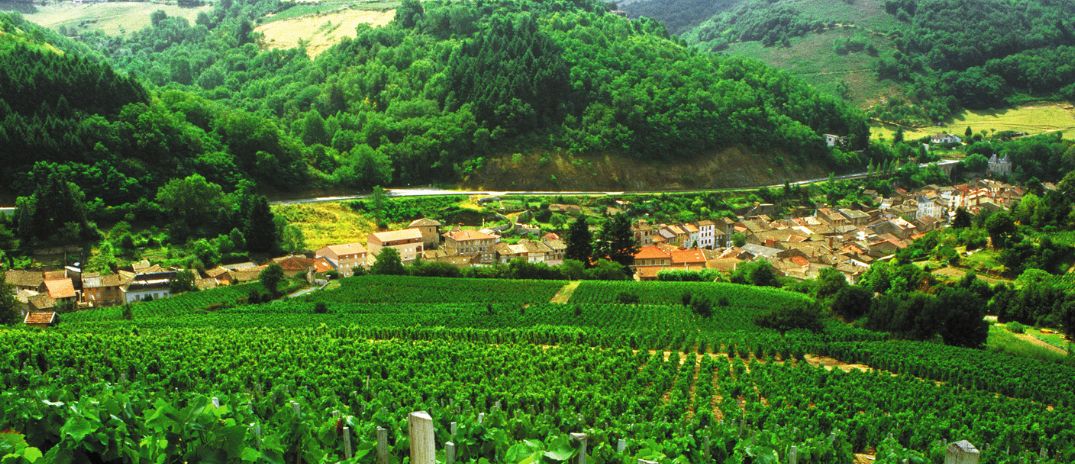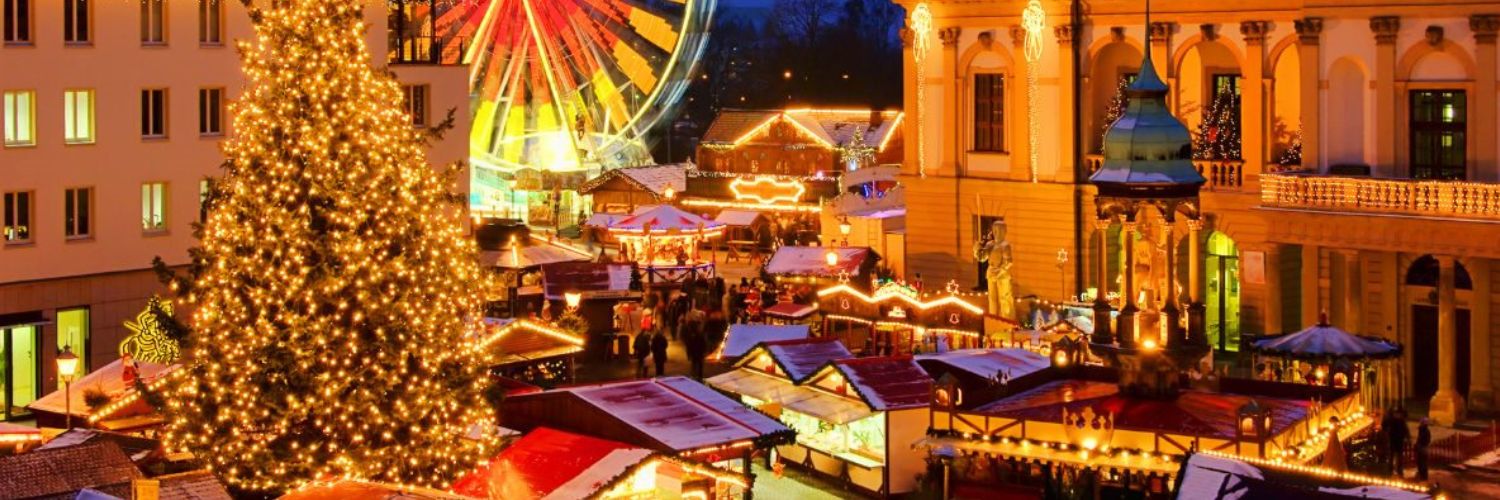From crisp whites to fruity rosés, summer offers an array of delightful options to tantalise our palates and enhance our enjoyment of this vibrant time of year. So, as the summer sun casts its warm glow and leisurely moments beckon, let's raise our glasses to the joy of exploration, to the beauty of diverse wine regions, and to the flavours that encapsulate the essence of summer.
Riesling - the gem of Germany

As the sun sets on a warm summer evening in Germany, there's no better way to soak in the beauty of the moment than by indulging in a glass of Riesling. Germany's rich winemaking heritage and stunning landscapes create the perfect backdrop for an unforgettable experience. Picture yourself sitting at a cozy outdoor cafe, overlooking rolling vineyards or a picturesque river valley, as you raise your glass to the vibrant hues of the setting sun.
When it comes to wine, there are few varieties as enchanting and versatile as Riesling. Hailing from Germany but now grown in various regions around the world, Riesling has captured the hearts of wine enthusiasts with its delicate aromas, vibrant acidity, and an impressive range of flavours. This noble grape has a unique ability to express the characteristics of its provenance soil, making each bottle a truly captivating experience for wine lovers. Perfect for pairing with Thai food or otherwise spicy cuisine, Riesling is one of the most food-friendly wines a person can drink during summer.
Though Germany has 13 official wine regions out of which most produce riesling, the Mosel-Saar-Ruwer is the most popular, and riesling its star. The region draws its name from the Mosel River, which curves through Rhineland-Palatinate's Eifel and Hunsrück regions.
Riesling is best served chilled but not overly cold. The ideal temperature range for most Rieslings is between 7°C and 13°C. This temperature range allows the wine to showcase its vibrant acidity and express its aromatic complexity.
To fully experience the roots and beauty of this wine, stay in the heart of the Rhineland-Palatinate region in Germany. We suggest a comfortable house in a holiday park in a fairytale-like hilly area. Ferienresort Cochem emanates a romantic and authentic atmosphere, where stunning views of the hills, lush green forests, vast vineyards, and the Moselle River greet guests.
Frappato - the secret of Sicily
Nestled in the sun-drenched island of Sicily, Italy, lies a hidden gem in the world of wine: Frappato. This unique and captivating grape variety, native to the region, has been delighting wine enthusiasts with its elegance, vibrant flavours, and a distinct sense of place.
Frappato's rise to prominence in recent years can be attributed to the passionate winemakers who have recognised its potential and championed its cause. These dedicated individuals work tirelessly to express the true essence of Frappato, crafting wines that capture the soul of Sicily. From small family-owned wineries to esteemed producers, their commitment to quality shines through in every bottle.
What sets Frappato apart is its ability to strike a perfect balance between lightness and complexity. It produces wines that are medium-bodied, with an enchanting transparency and a beautiful ruby-red color that dances in the glass. As you raise your glass of Frappato, take a moment to appreciate its enticing aromas, a delightful bouquet of wild strawberries, red cherries, and delicate floral notes that waft from the glass, inviting you into a world of sensory pleasure.
The recommended serving temperature for Frappato falls between 13°C and 60°F 15°C. At this temperature range, the wine strikes a balance between its aromatic complexity and its lively, fruit-driven profile. Serving Frappato too cold may dampen its expressive nature, muting some of the delicate aromas and flavours that make it so captivating.
A great companion for food, Frappato marries with first courses, such as fish soup and vegetable couscous, or with swordfish, blue fish, white meats, and local cured meats and cheeses.
Let this Sicilian gem transport you to gorgeous vineyards, where centuries of winemaking tradition meet the zest for life that is quintessentially Sicilian. Raise your glass and savour the moment as you uncover the secrets of Frappato - a wine that captures the heart and soul of this enchanting island. Salute!
So travel to the southeastern coast of Sicily, jump into local life, and learn what La Dolce Vita truly means. Casa Avola awaits right next to the tranquil seaside and offers a terrace area, ideal to try out a perfectly chilled Frappato.
Rosé - the star of Provence

The global popularity of rosé has sparked a surge in production, with wine regions around the world embracing this trend and crafting exceptional pink wines. From the renowned vineyards of Provence in France, where rosé has a longstanding tradition, to the coastal regions of California, where innovative winemakers are pushing boundaries, there's an abundance of rosé styles and flavours to explore.
Picture yourself sitting on a sun-drenched terrace, overlooking a vineyard that stretches towards the horizon. The gentle breeze carries the scent of lavender and wild herbs, infusing the air with a fragrant bouquet that complements the wine in your glass. As you take your first sip of Provence rosé, you're greeted with a refreshing burst of flavours: crisp red berries, hints of citrus, and delicate floral notes. The wine dances on your palate, evoking a sense of joy and pure summer bliss.
When it comes to flavour profiles, the world of rosé is diverse and exciting. From bone-dry and crisp styles to slightly off-dry and fruit-forward expressions, there's a rosé to suit every taste preference. Expect a symphony of flavours that can range from delicate red berries, citrus fruits, and watermelon to more nuanced notes of herbs, spices, and floral undertones. Each sip unveils a new layer, inviting you to savour the complexity hidden within the rosy depths.
In general, rosé is best served chilled but not ice-cold. The recommended serving temperature for most rosé wines falls between 7°C and 13°C. Serving rosé too cold can mask some of its subtle aromas and flavours, making it appear more austere on the palate. Additionally, extremely low temperatures can diminish the wine's complexity and diminish the expression of its nuanced characteristics.
Pairing rosé with food is a delightful adventure, as it effortlessly bridges the gap between red and white wines. Its versatility allows it to complement an array of dishes, making it an excellent choice for diverse cuisines. Rosé's acidity and fruitiness make it a refreshing accompaniment to fresh salads, seafood, grilled vegetables, and light pasta dishes. It also pairs wonderfully with charcuterie, soft cheeses, and even spicy Asian or Mexican flavours.
It is time to make all of your rosé dreams come true and dive into the ethereal beauty of the Provence Alpes Côte d'Azur region. Stay in Port Prestige, in Antibes, which faces the marina, close to the old town of Antibes and a sandy beach.
Pinot Grigio - the alluring taste of Northern Italy
When it comes to classic white wines, few hold the allure and elegance of Pinot Grigio. With its light and refreshing nature, delicate aromas, and versatile character, Pinot Grigio has become a beloved choice for wine enthusiasts around the world.
Originating in the northeastern regions of Italy, Pinot Grigio is known for its pale straw colour and crisp, dry profile. The grapes, which are a mutation of the red grape Pinot Noir, produce wines that captivate with their understated beauty and subtlety. The name "Grigio" translates to "grey" in Italian, a nod to the grape's slightly greyish-blue hue, which distinguishes it from other white grape varieties.
When it comes to serving Pinot Grigio, the ideal temperature is crucial to fully appreciate its flavours. It is generally recommended to serve it chilled but not excessively cold. A temperature range between 7°C and 10°C allows the wine to showcase its refreshing qualities while still allowing the delicate aromas to unfold.
Pinot Grigio matches best with fresh flavours as well since it has lots of bright fruity notes. Consider light pasta and rice dishes with lots of herbs, fresh green salads and vegetables, chicken and turkey, and naturally fish and seafood. Anything with a white wine or lemon sauce is excellent with Pinot Grigio as well.
Italy, with its rich history, breathtaking landscapes, and unparalleled culinary traditions, is a country that knows how to embrace the good life. And when it comes to enjoying a glass of one their most well-known wines, there's no better place to do so than in the heart of Italy during the radiant summer months. Imagine yourself seated at a quaint trattoria overlooking a vineyard in the Veneto region, with the warm Italian sun caressing your skin. The scent of ripe grapes mingles with the fragrant herbs that adorn the countryside, creating an aromatic symphony that awakens your senses. As you raise a glass of chilled Pinot Grigio to your lips, you can't help but be captivated by the sheer beauty of the moment.
Bungalow Pino Nero in Veneto is part of an exclusive resort that preserves the identity of nature in which it is embedded. It stands on an area of 250,000 m² of wonderful Mediterranean vegetation and is an ideal place for those seeking tranquility and intimacy and want to relax in contact with uncontaminated nature. It is the ideal place to experience what Northern Italy offers during the hot summer months and the perfect spot to enjoy a local Pinot Grigio.
Beaujolais - a surprise from Burgundy

Beaujolais wine hails from the southern part of Burgundy, extending along the banks of the picturesque Saône River. The region is famous for its production of red wines made primarily from the Gamay grape, a varietal that thrives in Beaujolais' granite-rich soils and gentle slopes. The unique combination of terroir, climate, and winemaking traditions contributes to the distinctiveness of Beaujolais wines.
One of the standout features of Beaujolais wine is its light and fruity character. Unlike the robust and tannic reds of neighbouring Burgundy, Beaujolais wines are typically lighter in body, showcasing vibrant red fruit flavours such as cherry, raspberry, and strawberry. The wines are refreshing, lively, and often exhibit a subtle hint of floral notes, creating a delightful aromatic profile.
When it comes to serving Beaujolais wine, slightly chilling it enhances the drinking experience. Red Beaujolais wines are best served between 13°C and 15°C. This slight chill preserves the wine's freshness and enhances its vibrant fruit flavours, making it an excellent choice for warm summer days or al fresco dining.
Beaujolais wines are incredibly versatile regarding food pairing. Their bright acidity and fruit-forward nature make them a delightful match for a wide range of dishes. Lighter styles of Beaujolais, such as Beaujolais Nouveau, pair beautifully with charcuterie, picnic-type foods, and mild cheeses. As you move up the quality ladder to Beaujolais-Villages and Cru Beaujolais, the wines become more structured and complex, making them excellent companions for roasted poultry, grilled meats, and even heartier vegetarian dishes.
Exploring the Beaujolais region is not just about the wine, it's a journey through picturesque landscapes, charming villages, and a rich winemaking heritage. Picture this: you and your loved one, nestled in the scenic countryside of France, on a romantic picnic for two. As you open a bottle of Beaujolais, the enticing aromas of ripe cherries and wildflowers fill the air, adding an extra touch of romance to the moment. The wine's delicate ruby hue catches the sunlight, reflecting the love and joy that surrounds you. As you take a sip, the wine dances on your palate, its bright acidity and vibrant fruit flavours harmonising with the flavours of the French delicacies you've brought along.
If this sounds like something that plays on your heartstrings, you can make this your new reality by staying at Résidence Les Cordeliers which is actually a former convent, with a timeless charm, located in the historic center of Dijon.




